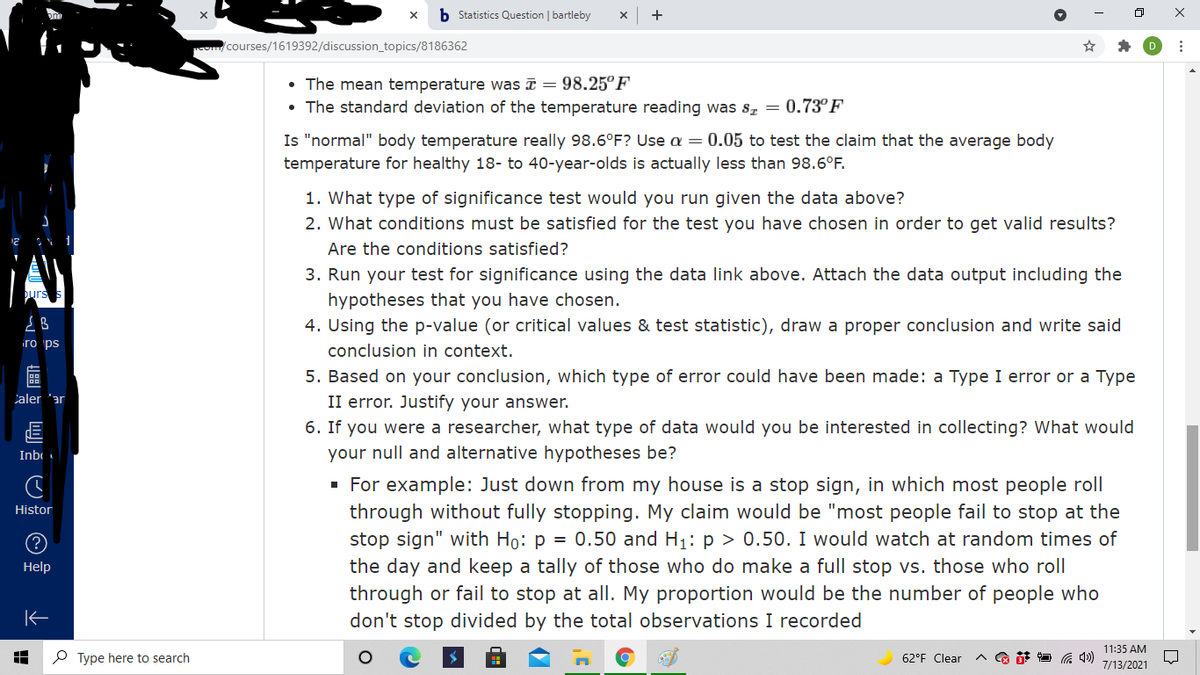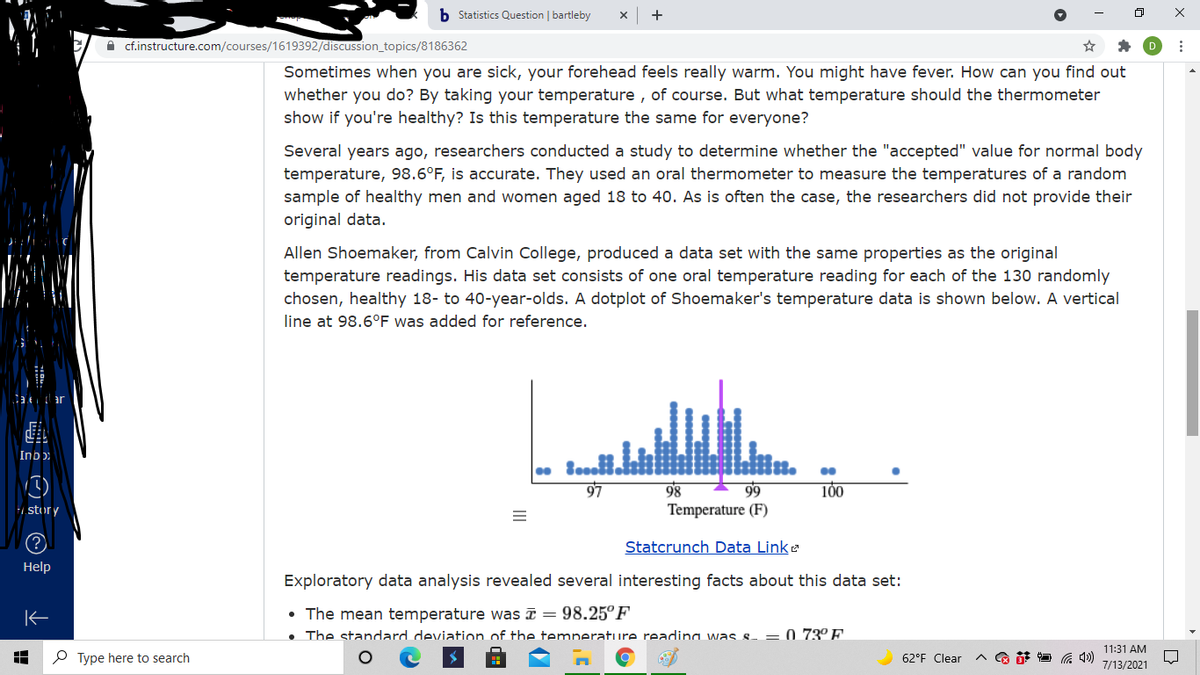• The mean temperature was = 98.25°F • The standard deviation of the temperature reading was s, = 0.73°F Is "normal" body temperature really 98.6°F? Use a = 0.05 to test the claim that the average body temperature for healthy 18- to 40-year-olds is actually less than 98.6°F. 1. What type of significance test would you run given the data above? 2. What conditions must be satisfied for the test you have chosen in order to get valid results? Are the conditions satisfied? 3. Run your test for significance using the data link above. Attach the data output including the hypotheses that you have chosen.
Inverse Normal Distribution
The method used for finding the corresponding z-critical value in a normal distribution using the known probability is said to be an inverse normal distribution. The inverse normal distribution is a continuous probability distribution with a family of two parameters.
Mean, Median, Mode
It is a descriptive summary of a data set. It can be defined by using some of the measures. The central tendencies do not provide information regarding individual data from the dataset. However, they give a summary of the data set. The central tendency or measure of central tendency is a central or typical value for a probability distribution.
Z-Scores
A z-score is a unit of measurement used in statistics to describe the position of a raw score in terms of its distance from the mean, measured with reference to standard deviation from the mean. Z-scores are useful in statistics because they allow comparison between two scores that belong to different normal distributions.


Trending now
This is a popular solution!
Step by step
Solved in 4 steps with 2 images







